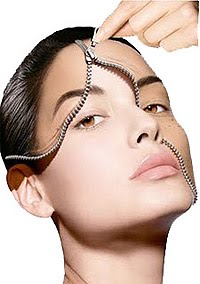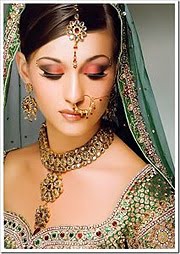The Skin Lightening website brings you another skin-care article...
 Myth #1: Pores open and close
Myth #1: Pores open and closeA pore is an opening in the skin that allows sebum to flow to the surface in order to keep the skin supple and moisturised. Pores do not open or close. If your pores are appearing larger, it is most likely due to dead skin cells that have built up on the pore. This is why exfoliation is important. Exfoliation helps to buff away dead skin cells and keeps the pores looking smaller and cleaner. Picking and squeezing on your pores can also stretch and scar them so that they appear larger than they should.
Myth #2: Oily skin should be dried out
 Oil production is very important for the maintenance of our skin. If you really have an oily skin, it is very important not to dry it out, but keep it balanced and clean. Hydration and oiliness are very separate. Just because your skin is oily does not mean that it needs no moisture. We put moisture on the skin to help it stay supple as it receives oil and water from the inside. Your skin should never feel tight or dry or burn after washing. In addition, anything that burns or ‘cools’ the skin is damaging it.
Oil production is very important for the maintenance of our skin. If you really have an oily skin, it is very important not to dry it out, but keep it balanced and clean. Hydration and oiliness are very separate. Just because your skin is oily does not mean that it needs no moisture. We put moisture on the skin to help it stay supple as it receives oil and water from the inside. Your skin should never feel tight or dry or burn after washing. In addition, anything that burns or ‘cools’ the skin is damaging it. Anyone can wear red lipstick if they know what shade of red to choose. The Marilyn Monroe red is best on light skin tones with light eyes. If you have a medium complexion, you will look best in brown reds. Warm brown reds suit olive tones and cool brown reds and burgundies for darker and red toned skins.
Myth #4: A shiny t-zone means oily skin
The t-zone is the area across your forehead that points down your nose towards your chin. If your cheeks develop a shine within a couple of hours of applying makeup, then yes you have oily skin – however, shine in the t-zone indicates a normal skin. Dry skins know that they are dry and oily skins know that they are oily. Those who have normal skins tend to think that they should be one or the other – not so – check your cheeks and you will know for sure.
Myth #5: It is best to use products that are hypoallergenic
The American FDA requires that all products sold as cosmetics go through some kind of allergy testing. Unfortunately, these tests are conducted or overseen by the companies themselves and are not regulated. From a regulatory point of view, this means that the products - when tested - did not produce allergic reactions in most subjects. So technically, all products are ‘hypoallergenic’. Be aware that this is a marketing tool when used to promote a product and that it does not guarantee that you will not be sensitive to it.
Reveal a bright, even skin tone with Lightening Gel. This proven-effective microemulsified gel lightens hyperpigmentation (age, brown patches) with Azelaic Acid, Arbutin and Mulberry. It minimizes sun and environmental damage, while counteracting skin irregularities and discoloration for a brighter, evenly toned complexion.










